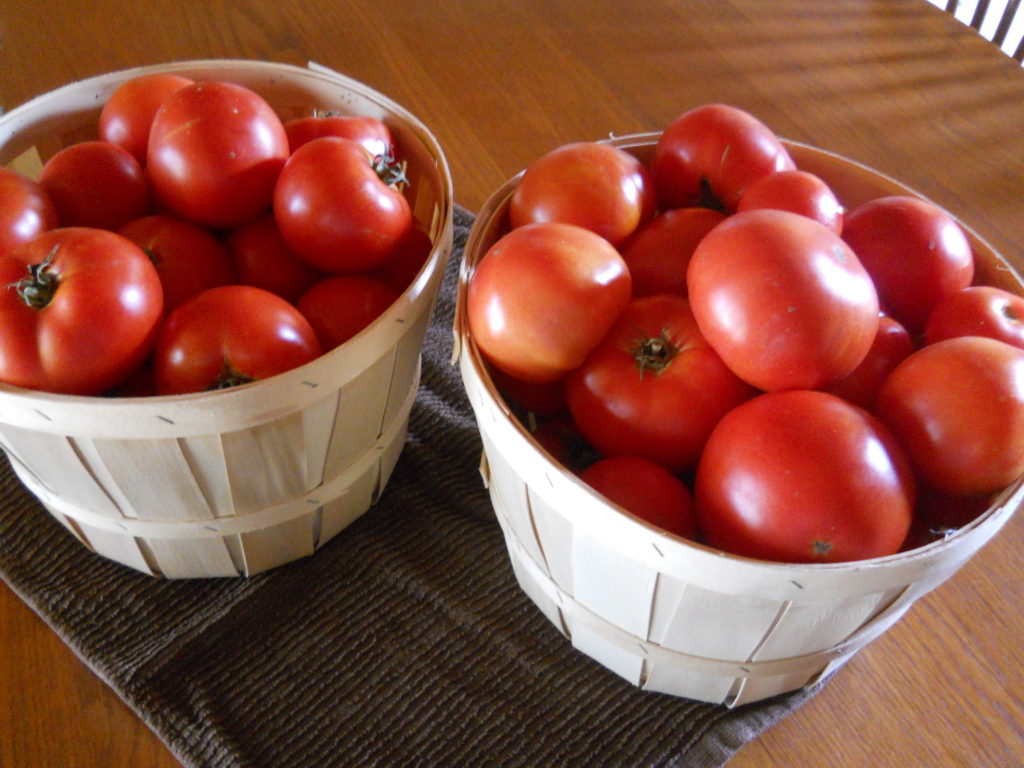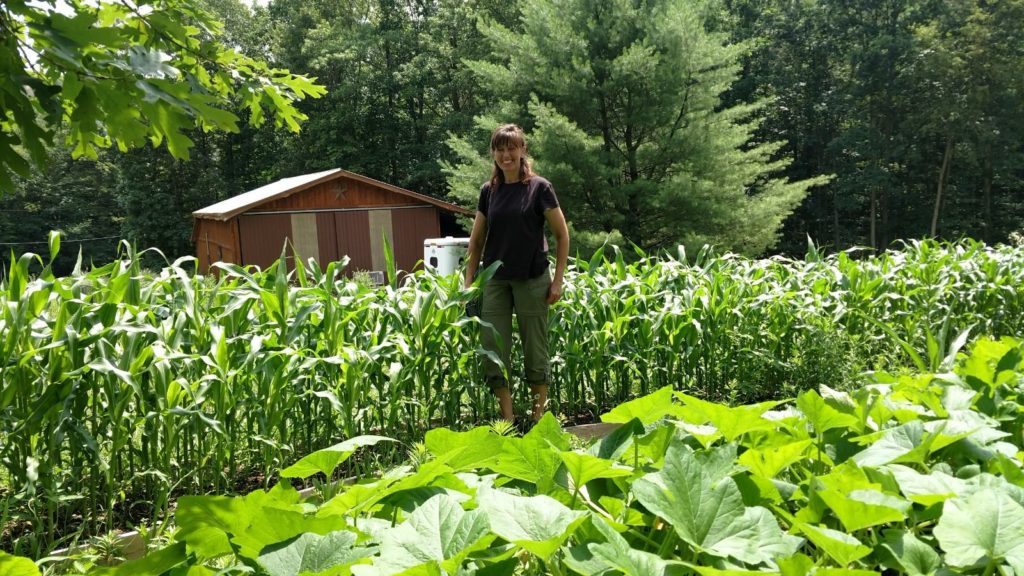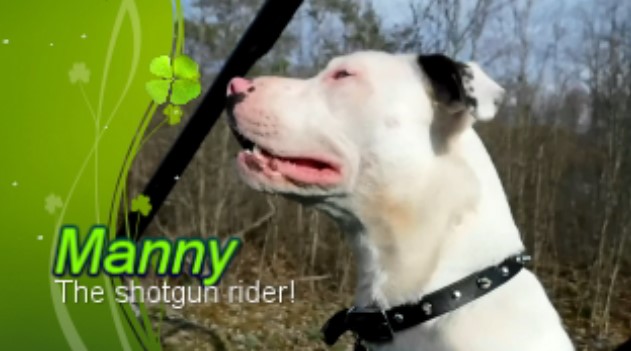Homestead Happenings
This is the homestead blog. We strive for self sufficiency and self reliance at the homestead while embracing everything farm and forest. Livestock, gardening, food preservation, fiber production, DIY, and traditional arts and crafts can be found at this blog.
How Does Your Garden Grow? Part 2 of 2

Continuing on with how we plan our gardens and using our simple example from Part 1, we know we will need space in our sample garden to grow 7 tomato plants. Once again, refer to the PDF file attached. Tomato plants are planted at a density of 0.5 per square foot or 1 plant for every 2 square feet. Each of our 7 tomato plants will need 2 square feet to grow, so we need 14 square feet of space.
Let’s say we have 15 square feet of space. We now have the opportunity to add another vegetable to that extra one square foot. Lettuce would go nicely with tomatoes. Looking at the chart, we could add 4 lettuce plants to our garden because lettuce is planted at a 4 plants per square foot density.
Let’s take that one step further and say we grow a 60-day lettuce variety. Maybe we live in an area that has 120 growing days. Our lettuce is finished growing at the half way point of the season. We could then plant a second crop of lettuce in the same space, or we could plant another 60-day vegetable (let’s say beets) after the lettuce is harvested. This is called succession planting. This is one way to make your available space more productive.
But what if we only have 12 square feet of space? Well, then we need to adjust our expectations. We can only grow 6 tomato plants in 12 square feet. Six good tomato plants will yield 24 pounds of tomatoes in a perfect world. Enter “Mother Nature”. Using our previous 70% factor for “Mother Nature”, we should only estimate a yield of 16.8 pounds of tomatoes (24 pounds x 70%).
I know this is a very simplified version of garden planning, but it is the concept used for our broader scale determinations. Some other factors we consider are input costs, expected market purchases, retail pricing, time constraints, and spoilage. It’s not an exact science and sometimes running through the exercise seems pointless. Take for example last year. It rained nearly every day. Tomatoes rotted on the vines before they ripened. Tomatoes typically make a decent profit margin. Last season was pitiful. I guess that’s why farmer’s say, “There’s always next year.”
So why do we do it? There’s something so exceptional to eating a fresh food with the nutritional quality and freshness at its peak. Maybe it’s the excitement of that tiny seed emerging into a plant that fascinates us. Maybe it’s just that some of us still like playing in the dirt like we were a child again. Maybe some of us cannot be contained by walls and prefer the outdoors. I really don’t know the answer. All I do know is I can’t quit. It’s an addiction with a support group that encourages you to continue. I have no intentions of quitting, and hope I can encourage others to become a gardening junkie, too.
How Does Your Garden Grow? Part 1 of 2

Usually by now I have my garden planned out and my seed ordered. I’m a little behind this year, but not to fear there is still plenty of time. I was asked to share how I go about planning the garden. Our gardens are grown for retail sale of produce so are more extensive, but the concept is the same as planting a kitchen garden or even a small garden. So as not to overwhelm, let’s keep the example simple, but remember it can be applied to any sized garden.
I should also probably mention that we use a raised bed gardening system. We base our production and sales on a per square foot basis and we intensely plant. We also succession plant which means that we try to always have something growing in the space. When one crop is finished, another goes in. This allows us to use the available garden space more effectively than gardens that only host a single crop per season. This is a little different than a large per acre production model or even a row model (usually based on 100’ segments). For simplicity, it is our unit of measure and by no means is the only way of looking at space planning.
The first step to garden planning is to decide what you want to grow. If you are planting a small garden, choose your favorite vegetables. If you are growing a kitchen garden, choose what you like to eat fresh along with those vegetables you want to store by canning, freezing, or drying for later use. Since we are a commercial enterprise, we look at what the market is requesting along with what sales and net profit value we get on a per square foot basis.
I have attached a PDF file showing items we grow. This is a summary, and the information is general. Some of the information may be different from information you see in seed catalogs. Many factors go into obtaining the information. For example, seed germination rates will vary depending on variety of a vegetable, the temperature of the soil, sometimes daylight hours depending on the seed type, etc. This chart is just for generalizing. Gardening is not an exact science and truth be told your garden will never go as planned so all you perfectionists (me included) have to learn to get over it.
Once you decide what you want to grow, decide how much of it you want to grow. Let’s say all I want is tomatoes. The chart indicates the yield for one tomato plant is 2-6 pounds. Let’s go with an average of 4 pounds per plant for simplicity. I decide that I want to grow 20 pounds of tomatoes. Using this information, I would need to grow 5 tomato plants. So, does that mean I only need 5 seeds? NO!!!
You see, there are two major factors that plague every gardener. One is the germination rate. For tomatoes, on average only 75% of the seeds germinate (see the chart). The second major factor is Mother Nature. Some years she’s a sweetheart and others, well, not so sweet. Determining a “Mother Nature” factor is the most difficult task. If you have terrible soil, expect a drought, garden in a pest prone area, expect horrific weather that year, or are the most pessimistic gardener on the planet, your “Mother Nature” factor will be a very low percentage. If you are an optimistic gardener with excellent soil, perfect weather, and no pests, then your “Mother Nature” factor will be a high percentage. (On a side note, if you are the optimistic gardener with the perfect soil, weather, and no pests, please step forward. Us struggling gardeners need to meet you!).
Now, comes the math. For you math deficient folks I will make this as easy as possible, so bear with me. We know we need 5 good plants to produce our desired 20 pounds of tomatoes. We know our germination rate is 75%. For this example, I will give “Mother Nature” a factor of 70%. Start by multiplying the two factors together. So:
75% x 70%
Or
0.75 x 0.70
Or
0.525
Next divide the number of plants needed by this result. We need 5 good plants, so:
5/0.525
Or
9.5238095238
Or
10 (round up!)
This tells me I need to order 10 seeds to get my desired 20 pounds of tomatoes.
Of the 10 seeds, 75% will germinate or 7.5 plants. Let’s round down to 7 plants so that it makes sense. 7 good plants will produce 28 pounds of tomatoes. Except, “Mother Nature” steps in. Of your 28 anticipated pounds, you will only get 70% (“Mother Nature” factor) or 19.6 pounds, rounded to about 20 pounds.
If you have the space and this is all you want to grow. Go ahead and order your seeds.
For those that either lack space or want to grow other vegetables, proceed to Part 2.
